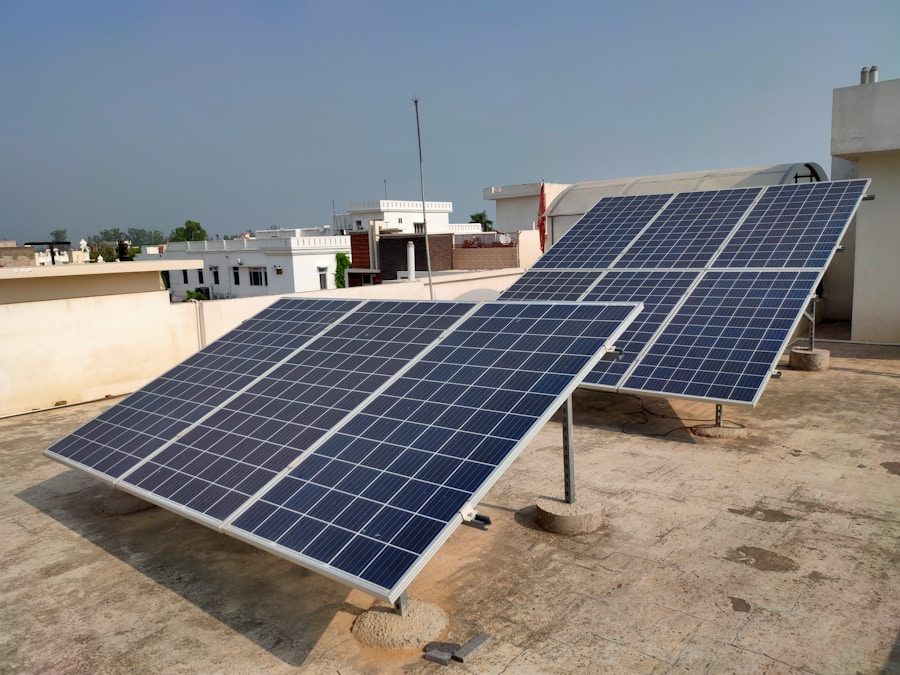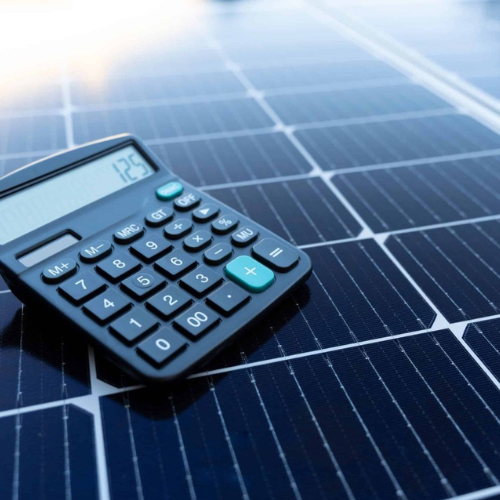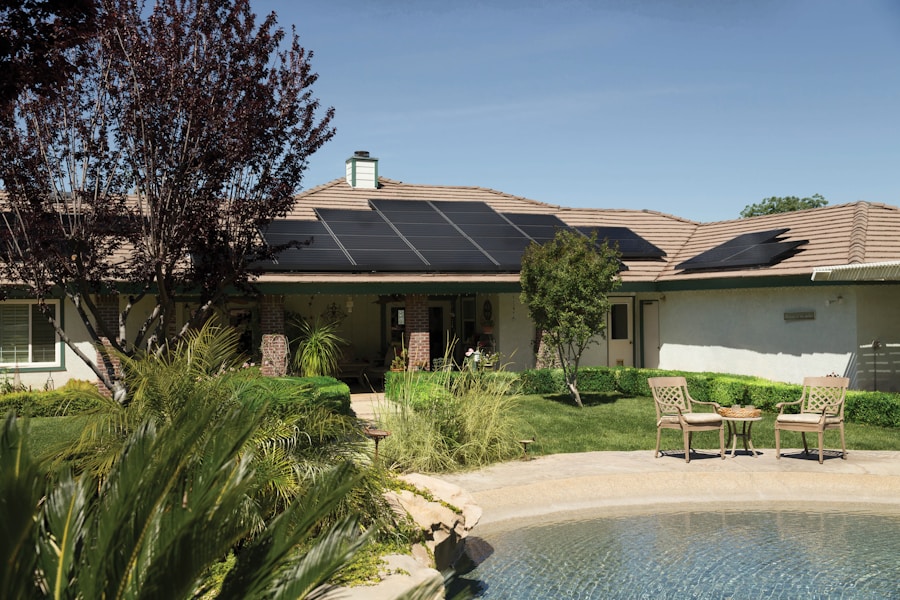Contents
- 1 The Role of a 5000 Watt Inverter in Solar Power Systems
- 2 Choosing the Right Solar Panels for Your 5000 Watt Inverter
- 3 Maximizing Solar Power Output with Efficient Wiring and Mounting
- 4 Monitoring and Maintaining Your Solar Power System for Optimal Performance
- 5 Integrating Battery Storage with Your 5000 Watt Inverter for Round-the-Clock Power
- 6 Tips for Maximizing the Efficiency of Your 5000 Watt Inverter
- 7 The Future of Solar Power and the Role of 5000 Watt Inverters in Renewable Energy
- 8 FAQs
As you embark on your journey into the world of solar power, it’s essential to grasp the fundamental concepts that underpin this renewable energy source. Solar power harnesses energy from the sun, converting it into electricity through photovoltaic (PV) cells found in solar panels. This process begins when sunlight strikes the solar panels, exciting electrons and generating direct current (DC) electricity.
This DC electricity can then be converted into alternating current (AC) electricity, which is the form of electricity used in most homes and businesses. Understanding this basic mechanism is crucial as it lays the groundwork for your exploration of solar energy systems. Moreover, solar power is not just about the technology; it’s also about the benefits it brings to you and the environment.
By utilizing solar energy, you can significantly reduce your carbon footprint, contributing to a cleaner planet. Additionally, solar power can lead to substantial savings on your electricity bills over time. As you consider investing in solar technology, keep in mind that the initial costs may be offset by long-term savings and potential tax incentives.
The more you understand these basics, the better equipped you will be to make informed decisions about your solar power system. Get your free solar assessment at https://www.solarenergy4u.org/free-pro-advice/.
Key Takeaways
- Solar power harnesses energy from the sun to generate electricity for residential and commercial use.
- A 5000 watt inverter is a crucial component in solar power systems, converting DC power from solar panels into AC power for use in homes and businesses.
- When choosing solar panels for a 5000 watt inverter, consider factors such as efficiency, durability, and warranty to ensure optimal performance.
- Efficient wiring and mounting of solar panels can maximize power output by minimizing energy loss and optimizing sun exposure.
- Regular monitoring and maintenance of a solar power system is essential for ensuring optimal performance and longevity.
The Role of a 5000 Watt Inverter in Solar Power Systems
When you delve deeper into solar power systems, one of the key components you will encounter is the inverter, particularly a 5000 watt inverter. This device plays a pivotal role in converting the DC electricity generated by your solar panels into AC electricity that can be used to power your home or business. The capacity of a 5000 watt inverter means it can handle a significant amount of energy, making it suitable for medium-sized residential systems or small commercial applications.
Understanding its function is vital for optimizing your solar energy setup. In addition to its primary function of conversion, a 5000 watt inverter often comes equipped with advanced features that enhance the overall efficiency of your solar power system. Many modern inverters include monitoring capabilities that allow you to track energy production and consumption in real-time.
This data can be invaluable for identifying trends and making adjustments to maximize efficiency. Furthermore, some inverters offer grid-tie capabilities, enabling you to sell excess energy back to the grid, which can further offset your energy costs. By recognizing the importance of a 5000 watt inverter, you can better appreciate how it integrates into your solar power system.
Choosing the Right Solar Panels for Your 5000 Watt Inverter

Selecting the appropriate solar panels for your 5000 watt inverter is a critical step in ensuring optimal performance and efficiency. The first consideration should be the wattage of the solar panels themselves. To fully utilize a 5000 watt inverter, you will need to install enough panels to generate at least that amount of power under ideal conditions.
For instance, if you choose 300-watt panels, you would need approximately 17 panels to reach the desired output. It’s essential to calculate your energy needs accurately and select panels that align with those requirements. In addition to wattage, you should also consider the efficiency ratings of the solar panels.
Higher efficiency panels convert more sunlight into electricity, which can be particularly beneficial if you have limited roof space. Furthermore, look for panels with a good warranty and durability ratings, as these factors can impact long-term performance and reliability. By carefully evaluating your options and selecting high-quality solar panels that complement your 5000 watt inverter, you can create a robust solar power system that meets your energy needs effectively.
Maximizing Solar Power Output with Efficient Wiring and Mounting
| Metrics | Value |
|---|---|
| Solar Panel Efficiency | 20% |
| Optimal Tilt Angle | 30 degrees |
| Optimal Orientation | South-facing |
| Wire Losses | 2% |
| Mounting System Efficiency | 95% |
Once you have selected your solar panels and inverter, the next step is to focus on wiring and mounting to maximize your solar power output. Proper wiring is crucial for minimizing energy loss during transmission from the panels to the inverter. Using high-quality wiring materials and ensuring that connections are secure can significantly enhance the efficiency of your system.
Additionally, consider the length of your wiring runs; shorter distances between components can reduce resistance and improve overall performance. Mounting your solar panels correctly is equally important for maximizing output. The angle and orientation of your panels can greatly influence their ability to capture sunlight throughout the day.
Ideally, panels should be mounted at an angle that allows them to receive direct sunlight for as many hours as possible. If you live in an area with seasonal variations in sunlight, adjustable mounts may be worth considering, as they allow you to change the angle of your panels based on the time of year. By paying attention to these details in wiring and mounting, you can ensure that your solar power system operates at peak efficiency.
Monitoring and Maintaining Your Solar Power System for Optimal Performance
To ensure that your solar power system continues to perform optimally over time, regular monitoring and maintenance are essential. Many modern inverters come equipped with monitoring systems that allow you to track energy production and identify any potential issues quickly. By keeping an eye on these metrics, you can detect drops in performance that may indicate problems with your panels or inverter.
Regularly checking these statistics will empower you to take proactive measures before minor issues escalate into significant problems. Maintenance tasks should also be part of your routine to keep your system running smoothly. This includes cleaning your solar panels periodically to remove dirt, debris, or snow that may obstruct sunlight.
Additionally, inspect wiring and connections for any signs of wear or damage. If you notice any issues or if performance drops significantly, don’t hesitate to consult a professional for assistance. By committing to regular monitoring and maintenance, you can extend the lifespan of your solar power system and ensure it continues to meet your energy needs effectively.
Integrating Battery Storage with Your 5000 Watt Inverter for Round-the-Clock Power

Key Benefits of Battery Storage
By incorporating battery storage into your setup, you can create a more resilient and efficient solar power system that meets your energy needs around the clock.
Selecting the Right Battery Storage System
When selecting a battery storage system, consider factors such as capacity, discharge rates, and compatibility with your inverter. Lithium-ion batteries are popular choices due to their efficiency and longevity compared to traditional lead-acid batteries. Additionally, ensure that your inverter is compatible with battery storage systems; many modern inverters are designed with this integration in mind.
Creating a Reliable Solar Power System
By integrating battery storage with your solar power system, you can enjoy a reliable source of energy 24/7, even during periods of low solar production. This means you can power your home or business with confidence, knowing that you have a steady supply of clean energy.
Tips for Maximizing the Efficiency of Your 5000 Watt Inverter
To get the most out of your 5000 watt inverter, there are several strategies you can implement to maximize its efficiency. First and foremost, ensure that your inverter is installed in a location with adequate ventilation and protection from extreme temperatures. Inverters can become less efficient if they overheat; therefore, placing them in shaded or climate-controlled areas can help maintain optimal performance.
Another tip is to regularly update the firmware of your inverter if applicable. Manufacturers often release updates that improve performance or add new features; staying current with these updates can enhance efficiency and reliability. Additionally, consider investing in smart monitoring systems that provide real-time data on energy production and consumption; this information can help you make informed decisions about energy usage and identify areas for improvement.
The Future of Solar Power and the Role of 5000 Watt Inverters in Renewable Energy
As you look toward the future of solar power, it’s clear that technologies like the 5000 watt inverter will play a crucial role in advancing renewable energy solutions. With increasing concerns about climate change and a growing demand for sustainable energy sources, solar power is poised for significant growth in the coming years. Innovations in inverter technology are likely to continue evolving, leading to even greater efficiencies and capabilities.
Moreover, as more homeowners and businesses adopt solar energy systems, the integration of smart technologies will become increasingly important. The ability to monitor energy usage in real-time and adjust consumption patterns will empower users to optimize their systems further. As part of this transition toward renewable energy, 5000 watt inverters will remain essential components that facilitate efficient energy conversion and management within solar power systems.
By embracing these advancements, you can contribute to a more sustainable future while enjoying the benefits of clean energy in your daily life.
If you are considering investing in a 5000 watt solar inverter, you may also be interested in learning more about the benefits of renewable energy compared to fossil fuels. Check out this insightful article on renewable energy vs fossil fuels to understand the environmental impact of your decision. Additionally, you can explore government incentives for commercial solar projects in another article on government incentives for commercial solar. For real-life examples of the savings potential with solar energy, read through the solar savings case studies available at solar savings case studies. These resources can provide valuable insights as you navigate the world of solar energy and make informed decisions for your energy needs.
FAQs
What is a 5000 watt solar inverter?
A 5000 watt solar inverter is a device that converts the direct current (DC) electricity generated by solar panels into alternating current (AC) electricity that can be used to power household appliances and other electrical devices.
What are the key features of a 5000 watt solar inverter?
Key features of a 5000 watt solar inverter may include high efficiency, multiple input voltage options, built-in MPPT charge controller, LCD display, and various protection features such as overvoltage, overcurrent, and short circuit protection.
What can a 5000 watt solar inverter power?
A 5000 watt solar inverter can power a wide range of household appliances and electrical devices, including refrigerators, air conditioners, washing machines, lights, computers, and more, depending on the specific power requirements of each device.
How does a 5000 watt solar inverter work?
A 5000 watt solar inverter works by converting the DC electricity generated by solar panels into AC electricity that can be used to power household appliances. This conversion process involves the use of electronic components such as transformers, capacitors, and semiconductor devices.
What are the benefits of using a 5000 watt solar inverter?
The benefits of using a 5000 watt solar inverter include reducing electricity bills, decreasing reliance on the grid, reducing carbon footprint, and providing backup power during grid outages. Additionally, solar inverters can contribute to the overall sustainability and environmental impact of a household or business.








